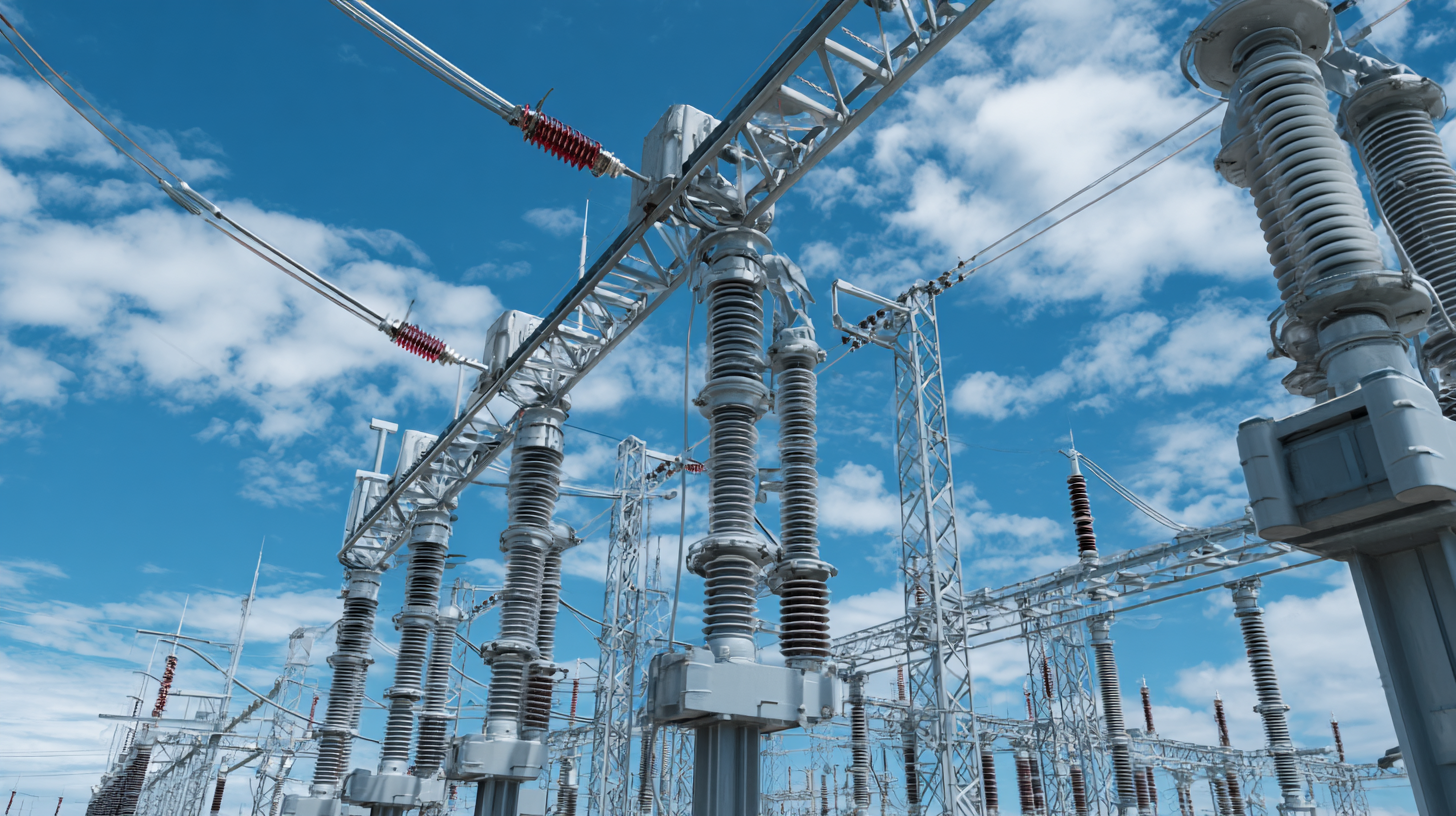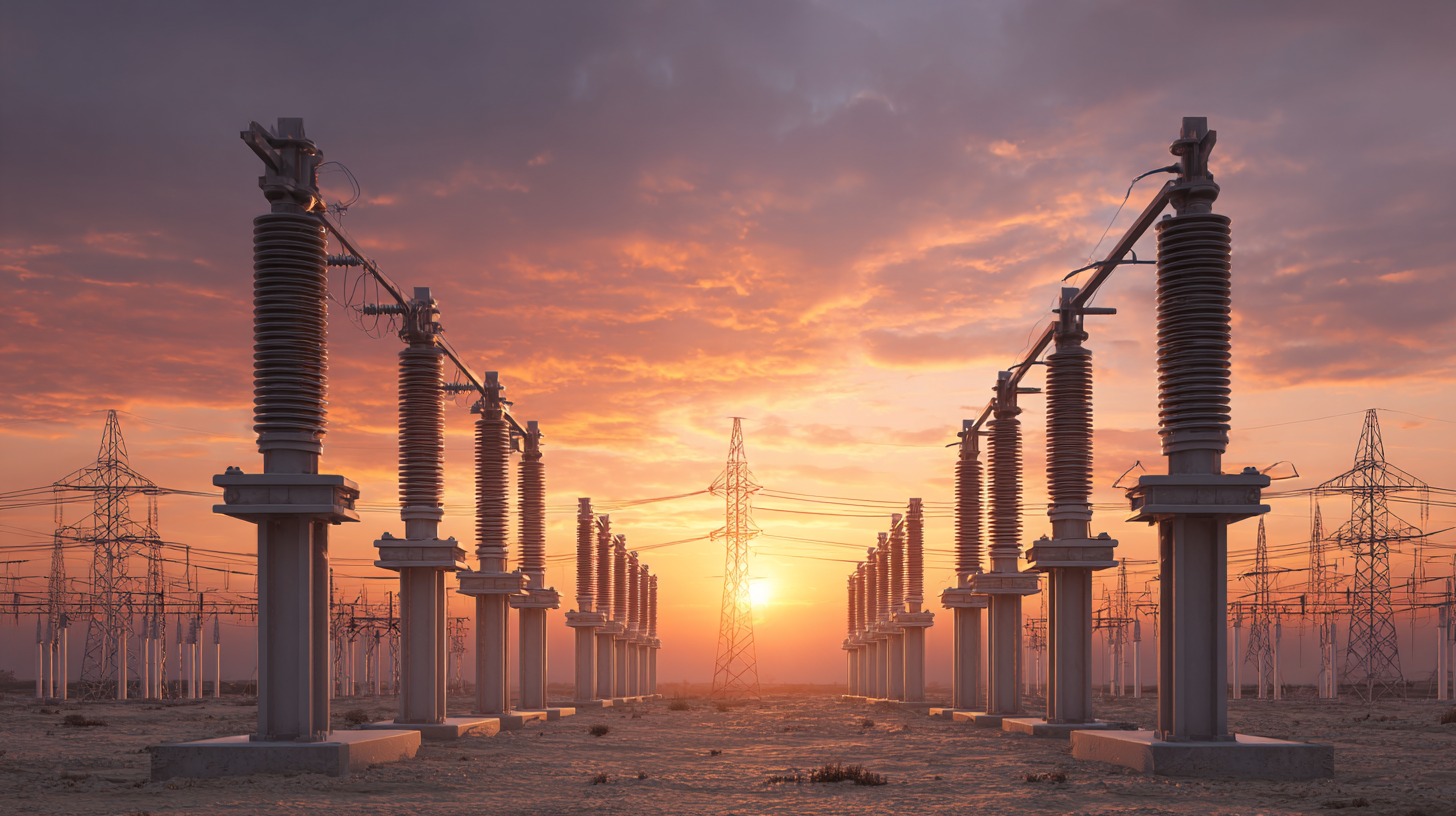Leave Your Message
As we advance into 2025, the demand for reliable and efficient Stand Off Insulators is expected to grow significantly, driven by a surge in electrical infrastructure projects and technological innovations. According to a recent report by MarketsandMarkets, the global market for insulators is projected to reach USD 17.94 billion by 2025, with a compound annual growth rate (CAGR) of 5.3%. This growth underscores the importance of understanding the key technology trends and the essential checklist for maximizing success in this niche market. Stand Off Insulators play a critical role in ensuring system reliability and minimizing maintenance costs, particularly in high-voltage applications. As utilities and manufacturers navigate the evolving landscape, focusing on the latest developments in materials, design, and performance metrics will be paramount for future success and sustainability in the electrical industry.

The landscape of stand-off insulators is set to undergo significant transformation by 2025, driven by key technological innovations that align with burgeoning industrial trends. As reported, advanced energy-efficient materials are becoming pivotal in various sectors, enabling substantial energy savings and enhancing overall operational efficiency. This aligns perfectly with the production of stand-off insulators, where innovations in materials science, particularly those utilizing smart insulation capabilities, are crucial. These materials not only improve energy performance but also provide adaptability to varying environmental conditions, addressing the needs of contemporary energy demands.
Additionally, the expansion of manufacturing industries in regions like India indicates a growing market for advanced technological solutions, including stand-off insulators. With India's electronics sector predicted to reach a market capitalization of $130 billion by 2030, the demand for high-performance insulator solutions is on the rise. Coupled with ongoing developments in solar photovoltaic technologies, which continue to evolve towards higher efficiency and lower costs, the future of stand-off insulators is closely linked to sustainable practices. Innovations such as graphite made from captured carbon further highlight the shift towards eco-friendly solutions, establishing a robust checklist for success in the insulator industry leading to 2025.
The production of stand-off insulators is heavily influenced by a set of critical industry standards that ensure safety, reliability, and performance. These standards, set by organizations such as the International Electrotechnical Commission (IEC) and the American National Standards Institute (ANSI), provide guidelines for the materials used, testing procedures, and environmental resilience of insulators. Compliance with these standards is not only crucial for manufacturers to ensure their products withstand diverse operational conditions, but it also builds customer trust and enhances market competitiveness.
In 2025, manufacturers will need to focus on evolving these standards to accommodate advancing technologies and materials. Innovations like polymer composite insulators are gaining traction, necessitating updated regulatory frameworks that address their unique properties. Furthermore, the shift towards sustainability is prompting the industry to develop eco-friendly production practices without compromising on the quality or effectiveness of insulators. As regulations adapt to these trends, staying abreast of these changes will be essential for industry players aiming for success in the competitive landscape of insulating technology.

As we approach 2025, the landscape of stand-off insulators is evolving with significant advancements in both materials and design features. Essential to these developments are innovative materials that enhance the insulator's performance while resisting environmental challenges. High-performance ceramics and composites are gaining traction, providing superior dielectric strength and mechanical durability.
These materials can withstand extreme temperatures and corrosive atmospheres, ensuring reliability in a variety of applications, from power transmission to renewable energy systems.
Moreover, the design of advanced stand-off insulators is increasingly focused on minimizing size and weight without compromising strength. Incorporating computer-aided design (CAD) technology enables engineers to optimize shapes and structures, resulting in insulators that can efficiently handle thermal and mechanical loads. Key features such as hydrophobic coatings or self-cleaning surfaces are also becoming standard, helping to maintain performance levels and reduce maintenance costs. As the industry moves forward, understanding these essential features will be vital for stakeholders aiming to innovate and stay competitive in the market for stand-off insulators.
As we move toward 2025, the implementation of innovative insulator solutions is becoming increasingly critical in the energy sector. To successfully integrate these advanced technologies, stakeholders must prioritize best practices that streamline the adoption process. One key approach is conducting thorough research and development to understand the material properties and potential benefits of various insulator technologies. By investing in materials that offer improved durability and performance under extreme conditions, companies can enhance the reliability of their systems.

Another essential practice involves fostering collaboration among manufacturers, researchers, and regulatory bodies. Establishing partnerships can lead to the sharing of expertise, resources, and insights that drive innovation. Additionally, creating a comprehensive checklist that outlines project goals, safety standards, and environmental considerations can help ensure that all parties are aligned and that the implementation process is smooth. By embracing these best practices, organizations stand a better chance of succeeding in a competitive market while contributing to a more sustainable future.
The stand-off insulator industry is poised for significant transformation by 2025, driven by both challenges and opportunities. As the demand for renewable energy sources continues to rise, the need for high-performance insulators becomes critical. According to a recent industry report, the global market for stand-off insulators is expected to grow by 6.5% annually, reaching approximately $1.2 billion by 2025. This growth is accompanied by the need for advancements in material science, particularly in the development of composite materials that enhance durability and reduce environmental impact.
Tips for industry players include investing in research and development to explore innovative materials and designs. Collaborating with universities and research institutions can unlock new technologies that improve the efficiency of stand-off insulators. Furthermore, companies should focus on sustainability, as regulatory pressures increase. This could involve adopting circular economy principles, which would not only meet compliance standards but also cater to environmentally conscious consumers.
Another challenge lies in the need for comprehensive testing and compliance with international standards. Ensuring that products are robust and reliable under varying environmental conditions is vital. Thus, enhancing quality control measures and leveraging data analytics for predictive maintenance can provide a competitive edge. Embracing these strategies will be key for success in the evolving stand-off insulator landscape.
